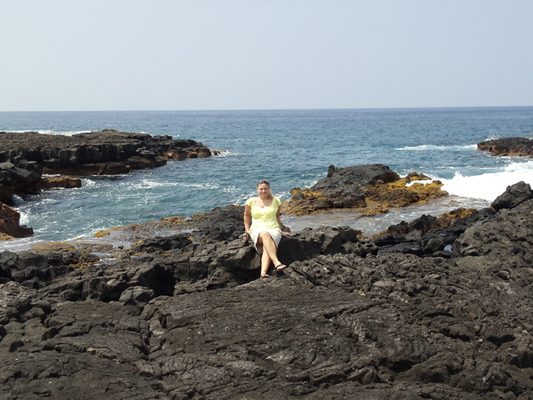
by Megan Sever Thursday, January 5, 2012

Megan Sever is managing editor of EARTH and writes the Hazardous Living blog. Jim Sever
Usually, when a major natural disaster strikes, a population becomes more alert and aware. People know what warning signs to watch for; they know what to do should such an event occur again. They increase their chances of staying alive. For example, intergenerational knowledge of tsunamis passed down by island tribes around the Indian Ocean is credited with saving lives during the 2004 Indian Ocean tsunami.
But now, new research on the after-effects of the Japan tsunami last March suggests that rather than being more prepared for the next major earthquake and tsunami, the Japanese people may be even more vulnerable than they were before the magnitude-9.0 Tohoku quake and tsunami.
This morning at the annual meeting of the American Geophysical Union (AGU) in San Francisco, Satoko Oki of the Earthquake Research Institute at the University of Tokyo in Japan presented results of several surveys taken before and after the tsunami. In spring 2010, following the magnitude-8.8 quake in Chile that had sent a 1.9-meter-high tsunami onto Japan’s coast, researchers polled hundreds of Japanese citizens about their perceptions of the danger of tsunamis.
They asked questions such as how high a tsunami needed to be before it was considered dangerous, and what height a tsunami needed to reach before people would evacuate. In 2010, the poll showed that roughly 70 percent of those surveyed thought a 3-meter-tall tsunami was dangerous and that 60 percent of people surveyed would evacuate if a 3-meter tsunami were headed their way.
In 2011, following the Tohoku quake — which produced tsunami waves up to 40 meters high — Oki and her team conducted a follow-up poll — although for sensitivity and other reasons, they did not poll people in the region most affected by the quake and tsunami. The results were surprising, Oki said.
Following the devastating quake, only 45 percent of those polled said a 3-meter-tall tsunami was dangerous and only 38 percent said they would evacuate from a 3-meter tsunami. Instead, the majority of those polled thought only taller tsunamis were actually dangerous. The problem with that, Oki said, is that a 2-meter-tall tsunami can easily destroy a house. So if people now are only considering much taller tsunamis to be a problem, then last March’s disaster actually made the people more vulnerable than before. Given that Japan is highly at risk for more tsunamis and earthquakes, she said, this isn’t a good situation.
To rectify it, Oki said, two things need to happen: First, scientists need to both convey the extremes and the real risks, like that a 2-meter tsunami can wipe out a home. Scientists focus too often on extreme and outlying events, she noted, when they need to remember that one of the highest goals should be to give information to help people avoid disaster. The second priority, she said, is that the media, which also tends to focus on the most extreme news, needs to do a better job at conveying risk. When the media and scientists focus on extremes, she said, the people only remember those large values, not the smaller ones that can be deadly as well — especially given that the smaller events happen more frequently.
Stay tuned to EARTH online for more dispatches from the AGU meeting.
© 2008-2021. All rights reserved. Any copying, redistribution or retransmission of any of the contents of this service without the expressed written permission of the American Geosciences Institute is expressly prohibited. Click here for all copyright requests.